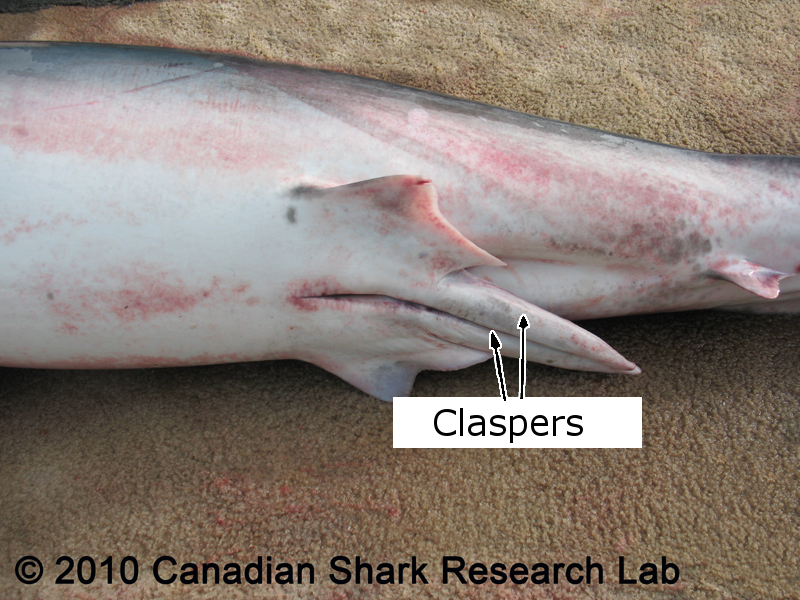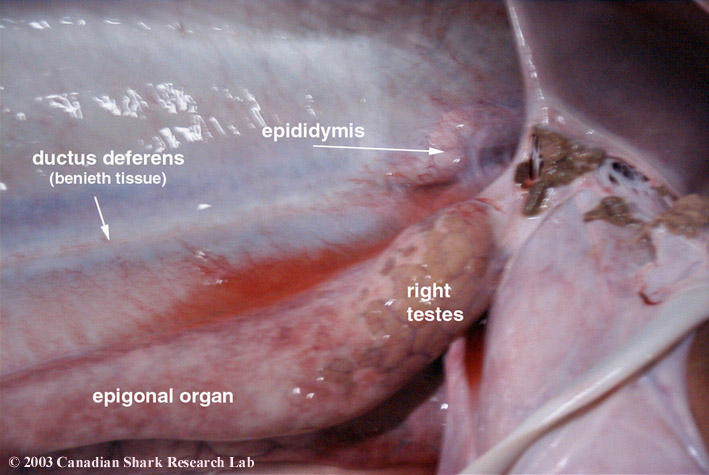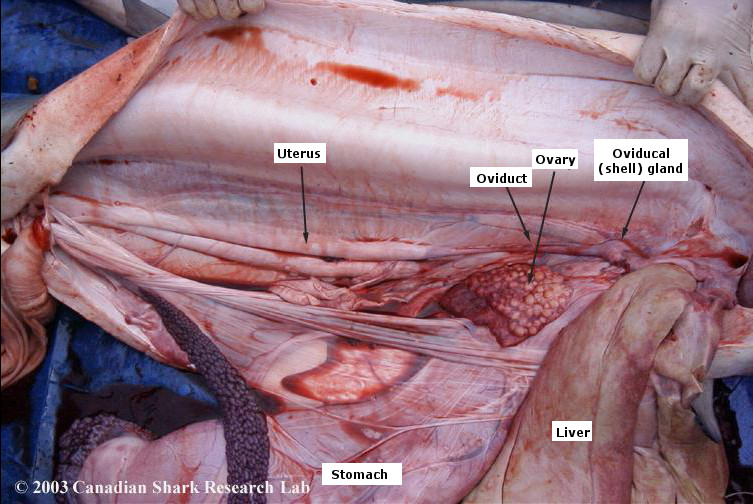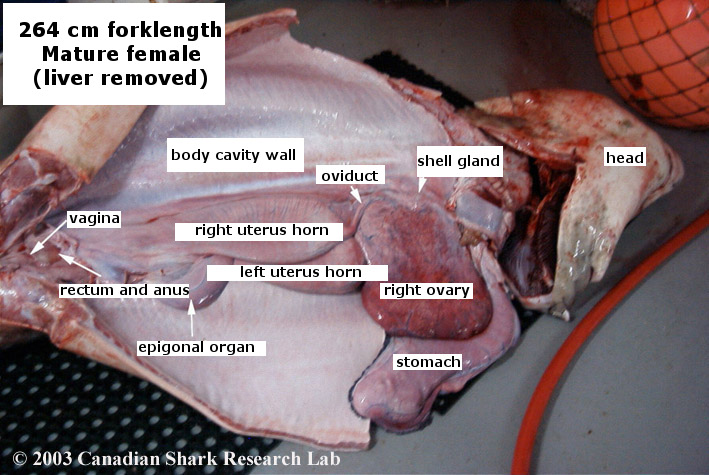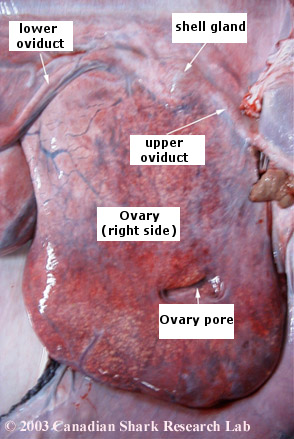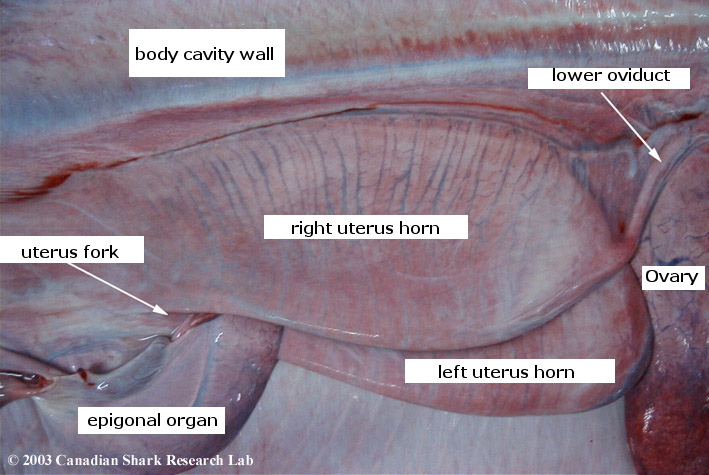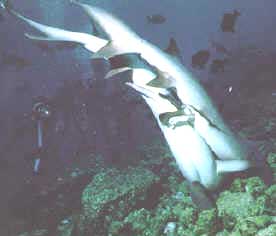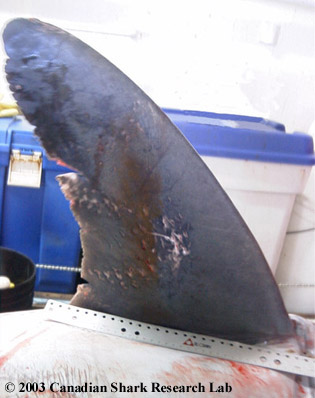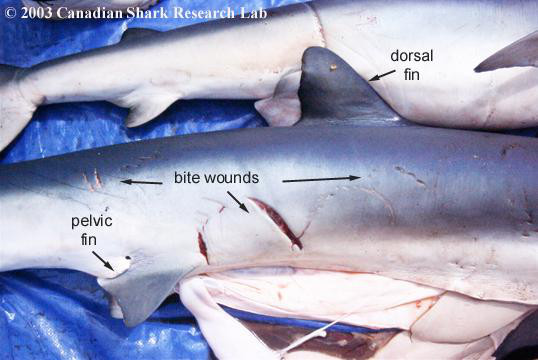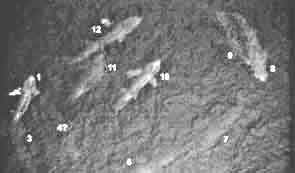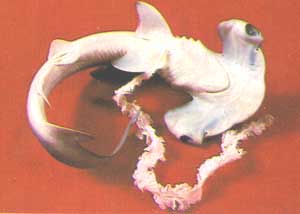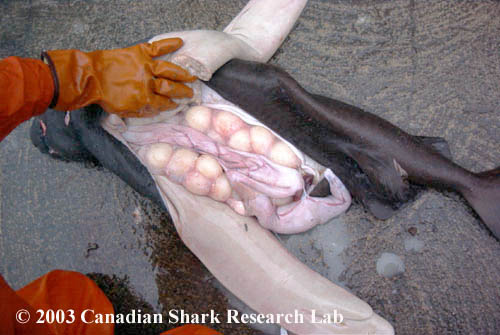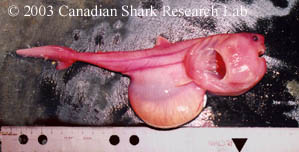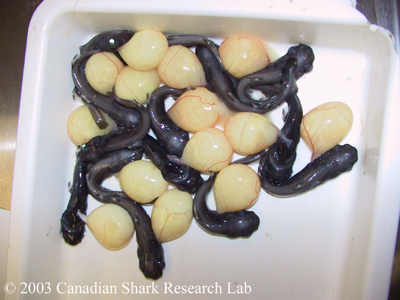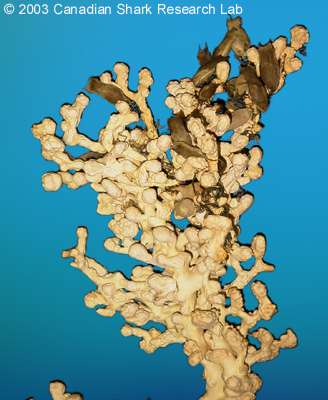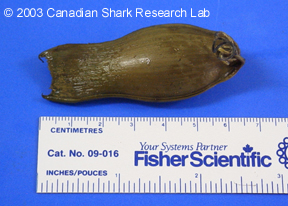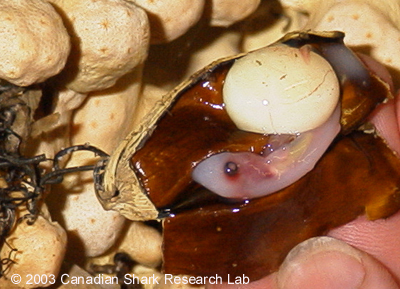Reproduction
Sharks are sexually dimorphic. That is, there are visual differences between males and females. Males, like the one seen in this picture, have pelvic claspers which are modified pelvic fins used for sperm delivery.
Claspers are rolls of cartilage that become stiffened with calcium in the adult. The presence or absence of these claspers make it very easy to differentiate males from females. Males also have paired testes, however the right one is always more developed than the left, which may be smaller or absent altogether.
The testes are internal and are located in the anterior end of the body cavity within the epigonal organ. The urinary and reproductive tracts join together to form the urogenital sinus. From there the sperm is eventually released into the groove of the claspers and is then delivered to the female during copulation.
Females do not have claspers. Instead they have a cloacal opening (as do the males) between the pelvic fins. The internal ovaries are found anteriorly in the body cavity and are paired, but as was the case with the male testes the left side is often reduced. Indeed, the left ovary often releases very few or no eggs.
Compare the reproductive organs of mature female blue and porbeagle sharks (Note: these are high resolution images, so images will take somewhat longer to display). Click here for internal images of the spiny dogfish.
Once eggs are released and fertilized, a horny shell or membrane is secreted around each one as they pass through the oviducal gland or shell gland. Some sharks produce a shell that is tough and can protect the young. In other species the membrane is slight or vestigial and the young develop and hatch within the uterus of the female. The eggs and egg cases produced by different species are highly variable. Eggs can be up to 60 or 70 mm in diameter and encased in shells up to 300 mm long. Shapes vary from spindle to purse-like with tendrils and hooks.
During copulation sharks meet face to face. As seen in this picture the male inserts one of his claspers into the cloaca of the female. Sperm contained within sperm packets called spermatophores are delivered to the female via a groove in the clasper. The spermatophores are forcefully ejected by contracting organs known as siphon sacs which use seawater currents to carry the spermatophores.
Another marked difference between the male and female sharks of some species is the thickness of their skin. The skin on a female blue shark is nearly twice as thick as that of males. It is believed that this is because of the viciousness of mating. Males will often bite females during face to face copulation leaving them with wounds. Without the extra thickness of the skin females could be severely injured.
The photos below show bite marks on the left pectoral fin of a female porbeagle and on female blue sharks.
Mating behaviour in sharks can be very complex and evidence suggests that there is some degree of mate selection within certain species. Sexes often segregate, and only come together to mate. Occasionally congregations form in mating behaviour. For instance, basking sharks have been seen forming mating circles like the one seen in this picture. The exact purpose of this behaviour is not known however it is clear that it related to mating.
There are three modes of reproduction within the sharks. In general most sharks bear live young, however there are some sharks who lay eggs. The most advanced form of development is called viviparity. This is when the female provides nourishment for the embryos as they develop inside of her. The nourishment can be delivered as a secretion called uterine milk or through a placental connection.
The hammerhead shown in this picture is an example of viviparous development. The placental connection to this fetus would have been connected to the uterine wall of the mother.
The most common form of development is referred to as ovoviviparity. This is similar to viviparity because the eggs are fertilized, hatch and develop within the body of the female. However the embryos do not receive any direct nourishment from the mother other than the initial investment of the egg production. In some species, the young can receive nutrients by devouring newly ovulated eggs or smaller, less developed embryos or siblings. This is known as oophagy.
Examples of ovoviviparous development. In this example of a portuguese shark, the developing ova can be clearly seen within the ovaries. The eggs will eventually move into the uteri where they will hatch, developing into an embryo nourished by large amounts of yolk. Further examples of various embryo stages of ovoviviparous development can be seen in the spiny dogfish and porbeagle sharks.
The final type of development is known as oviparity. In oviparous reproduction, sharks lay eggs in the form of egg cases, which they attach to algae or corals. The egg cases of at least one species are designed to be pushed into the sediment. Once the eggs are secure the female then leaves and the eggs receive no subsequent protection or nourishment.
A number of small dark eggs can be seen in the upper parts of the coral in this picture. Small tendrils attached to the egg case are used to fasten it to corals and algae. Without the protection of the mother,the embryo is then able to develop and hatch with some level of protection from predators.
